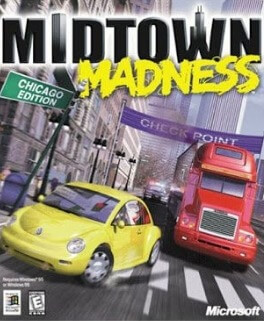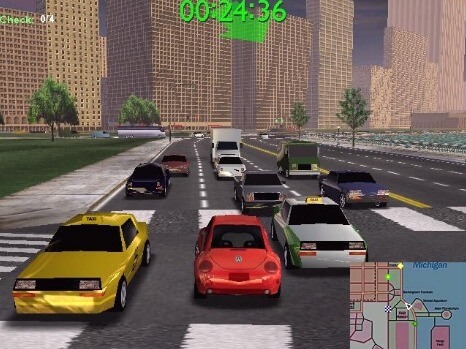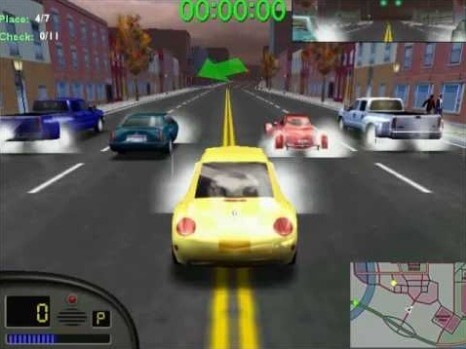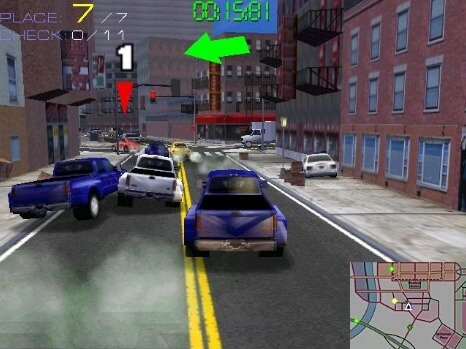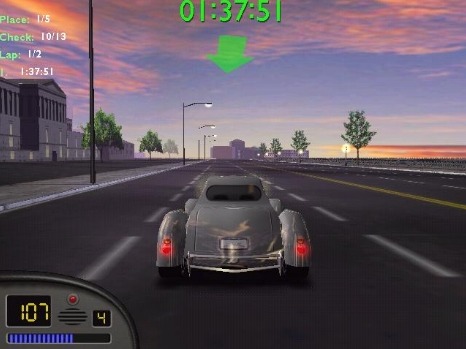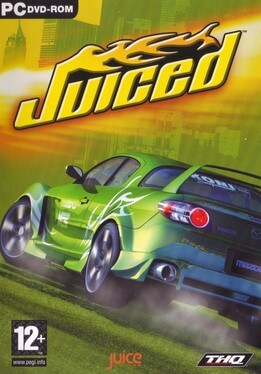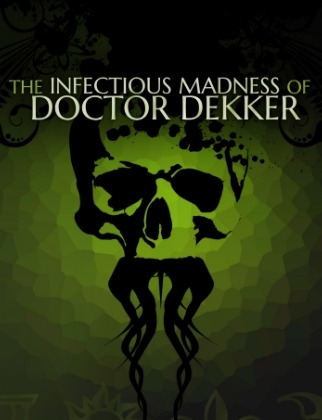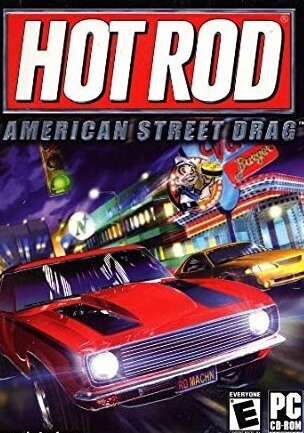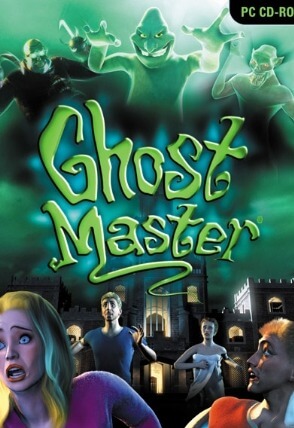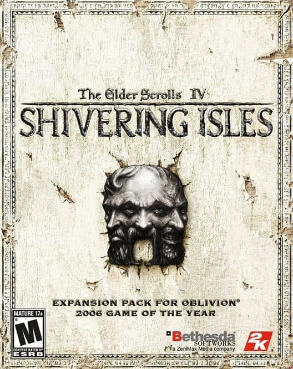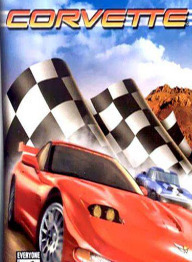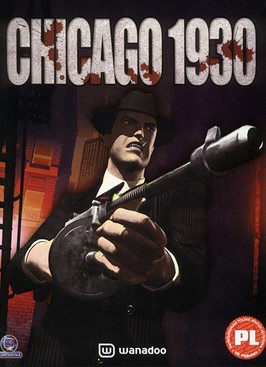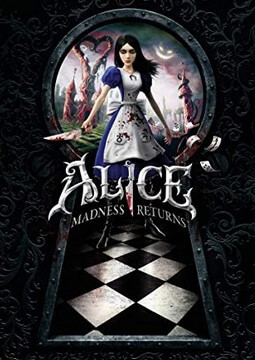Players start off with 5 vehicles, and 5 more are unlockable; the vehicles available range from a Volkswagen New Beetle and a Ford F-350 to a city bus and a Freightliner Century truck. Unlocking vehicles requires completing goals such as placing within the top three of any two races. If the player has previously won a certain race mission, they can change the race's duration and the weather when replaying it. The Checkpoint mode allows players to also set the frequency of traffic, police cars, and pedestrians.
The game's city environment is modeled after Chicago, including many of its landmarks, such as the 'L', the Willis Tower (then known as the Sears Tower), Wrigley Field, and Soldier Field. The streets feature a number of objects into which the player can crash, including trash bins, parking meters, mailboxes, and traffic lights. In Checkpoint, other vehicles move in accordance with traffic lights, but the player is under no obligation to obey them.
Midtown Madness supports multiplayer games via local area network, Internet, or serial cable connection. Multiplayer mode was originally supported by Microsoft's MSN Gaming Zone, but this service was retired on June 19, 2006. It is now supported by similar services such as GameSpy Arcade and XFire, via DirectPlay. Multiplayer mode includes a Cops and Robbers mode, a capture the flag-style game in which players form two teams and each team tries to steal the opposing team's cache of gold and return it to their own hideout.
Development
Midtown Madness was one of the first games that Angel Studios developed for the PC. Microsoft planned to publish sequels to racing computer games with the word Madness in the title, including Motocross Madness and Monster Truck Madness. According to project director Clinton Keith, the concept behind the game came to two Microsoft employees during an attempt to cross a crowded street in Paris. They proposed their idea to Angel Studios, who had tried to sell Microsoft a 3D vehicle simulator. Angel Studios was initially hesitant to accept Microsoft's offer given the magnitude of the proposed undertaking. They ultimately agreed and decided to use Chicago for the setting because the city was featured in several famous car chases from films, including The Blues Brothers. The development team asked Chicago residents to playtest the game to ensure that the city was recreated faithfully. PC Gamer reported that the recreation was mostly accurate, although certain landmarks were moved to enhance gameplay.
Angel Studios and Microsoft included regular cars in addition to the "overpowered Italian sports cars" often seen in racing games. The developers obtained permission from manufacturers to use the likenesses of selected vehicles. Microsoft received authorization from Volkswagen for the New Beetle, and Ford, for the Mustang, and the F-350 Super Duty. The decision to make only half the cars available at the outset was intended to promote a sense of competition. Microsoft staff asked Angel Studios employees to prevent players from hitting pedestrians. Angel Studios (after deciding against rendering pedestrians in two dimensions) developed 3D pedestrian models that could run and jump out of the way. Midtown Madness included an option to remove pedestrians, as they do not alter gameplay but may affect system performance when in a group; consequently, the game does not require a 3D graphics card.
A demo version was released for download on May 1, 1999; It featured three vehicles (a Mustang, a Panoz Roadster, and a bus), and all driving modes except circuit. In December 1999, Angel Studios reported that they were considering a race designer for players, but ultimately this feature was not added. The finished game was released on May 27, 1999.
Midtown Madness is distinct from other racing games of its time, especially those influenced by the Need for Speed series, in providing an open environment rather than a closed circuit. Project director Clinton Keith said that an open world makes the gameplay more diverse and adds "elements of discovery" such as finding shortcuts. Gary Whitta described the game as open world racing: "you still have checkpoints to hit but you don't have to follow the A-B-C-D standard to do it".
Reception
Reviews of Midtown Madness were generally positive, with video game critics praising its gameplay. IGN wrote that the game "doesn't rely heavily on driving authenticity; this game's all about fun." The review also praised the simplicity whereby players can "pick a real-world car and go". GameSpot wrote that "it's fun to be able to drive like a maniac ... because you know you can't in real life." Computer and Video Games remarked on the game's humor, provided by other drivers, police, and competitors (described as maniacs), praising the "carnage that unfolds before your windscreen". PC Zone recommended the game, calling it highly refreshing; Total Video Games said the game seemed a good choice, but suggested that it would be outdone by GT Interactive's Driver, released soon after. AllGame called it a "must-buy for the driving game enthusiast" and said that it would also appeal to players who are not necessarily fans of the racing car genre. Next Generation Magazine concluded its review by stating that Midtown Madness was not innovative, but that "it'll stay on your hard drive for a while and keep you playing".
IGN gave high marks to the game's graphics, saying that "the downtown portion of Chicago is portrayed very accurately" even though other parts of the city looked more generic. Next Generation Magazine said the graphics were impressive, it praised the "thoroughly detailed" random occurrences of "cars hurtling in front of you" and "cringing pedestrians when you lurch onto the sidewalks". GameSpot approved of the variety in third-person, first-person dashboard, and widescreen driving views. However, it complained of the game suffering from "choppy frame rates" and unconvincing visual effects.
PC Zone praised Angel Studios for avoiding gimmicks, instead presenting "accurately modelled cars and a meticulously recreated city" to the player. AllGame said Midtown Madness "possesses superb, immersive graphics", using the different times of day and weather as an example. However, it complained that cars not controlled by the player were lacking in detail. Computer and Video Games said that as well as being "structurally and visually consistent", the Chicago setting in Midtown Madness was "brought to life"—for instance, a "city bus legitimately pulling out at a four-way junction" can end the race for a player by destroying their car. However, Total Video Games called the game's presentation "far from optimal" even at the recommended system requirements. Reviewer Noel Brady pointed out "a serious lack of detail" and blockiness, especially without a graphics card. He was critical of the AI, declaring that cars often drive "without noticing the player at all". In his book AI Game Engine Programming, Brian Schwab described Midtown Madness' gameplay as "arcade style" and "fast and loose", and said the in-game traffic was satisfactory.
IGN described the in-game narration as "a nice touch", but noted some glitches among the otherwise "distinctive engine and horn sounds". GameSpot called the game's sounds exceptional, praising its variety of car noises such as the back-up beeper for the bus. PC Zone praised the in-game radio system, and the support for external media players. AllGame said players "get a dose of reality" with other drivers and pedestrians "hurling insults and exclamations your way".
The editors of PC Gamer US nominated Midtown Madness for their 1999 "Best Racing Game" award, which ultimately went to Re-Volt. They wrote that Midtown Madness "lays down a racing milestone by creating a living, breathing 3D city — and then letting you trash it." It was also a nominee for Computer Gaming World's "Racing Game of the Year" award, but lost to Need for Speed: High Stakes.
